
【Exclusive Interview】Calum Rae-Holyrood Distillery
- 造り手
- 蒸溜所(海外)

Alexandrion Group counts upon a legacy of over 200-years of experience in making both wines and spirits. In 2017, it expanded its production range to whisky by building the first distillery in Romania. Allan Anderson, a Master Distiller of Carpathian Single Malt and Whisky Director of the Alexandrion Group, applied his experiences and skills from five distilleries in three countries. He holds the impressive moniker as the first person to ever produce single malt whisky in Scotland, Ireland and Romania. This unique experience has helped him produce the multi-award-winning Carpathian Single Malt Whisky of Romania, a truly premium brand. The rich nature of the Carpathian and locally sourced ingredients distinguishes it from other whisky brands.
This time, Dear WHISKY interviewed Mr. Anderson and explored his varied career history in Scotland, Ireland, and Romania, followed by his challenging yet memorable experiences with creating Carpathian Single Malt Whisky.

| Company’s Name | Alexandrion Group |
| Year of Establishment | 1994 |
| Owner | Nawaf Salameh |
| Location | 19 A Nicolae Grigorescu Street 075100, Otopeni, Ilfov, Romania |
| Official Website | Alexandrion Group Carpathian Single Malt |
Dear WHISKY:
How did you start your career in whisky?
Allan:
I started my career as an engineer when I was 22. The first job I applied for was as a shift technician, having viewed a small advert in a local paper, which later turned out to be a brand-new grain distillery near Glasgow, the Loch Lomond Distillery.
Dear WHISKY:
What was your primary interest in working there?
Allan:
Basically, my interest was in engineering and what captivated me was that this was the first fully-automated distillery. Remember this was 30 years ago when people were still opening and closing valves manually. So, it was interesting to be involved with, understand and learn from this new and complex operation system.
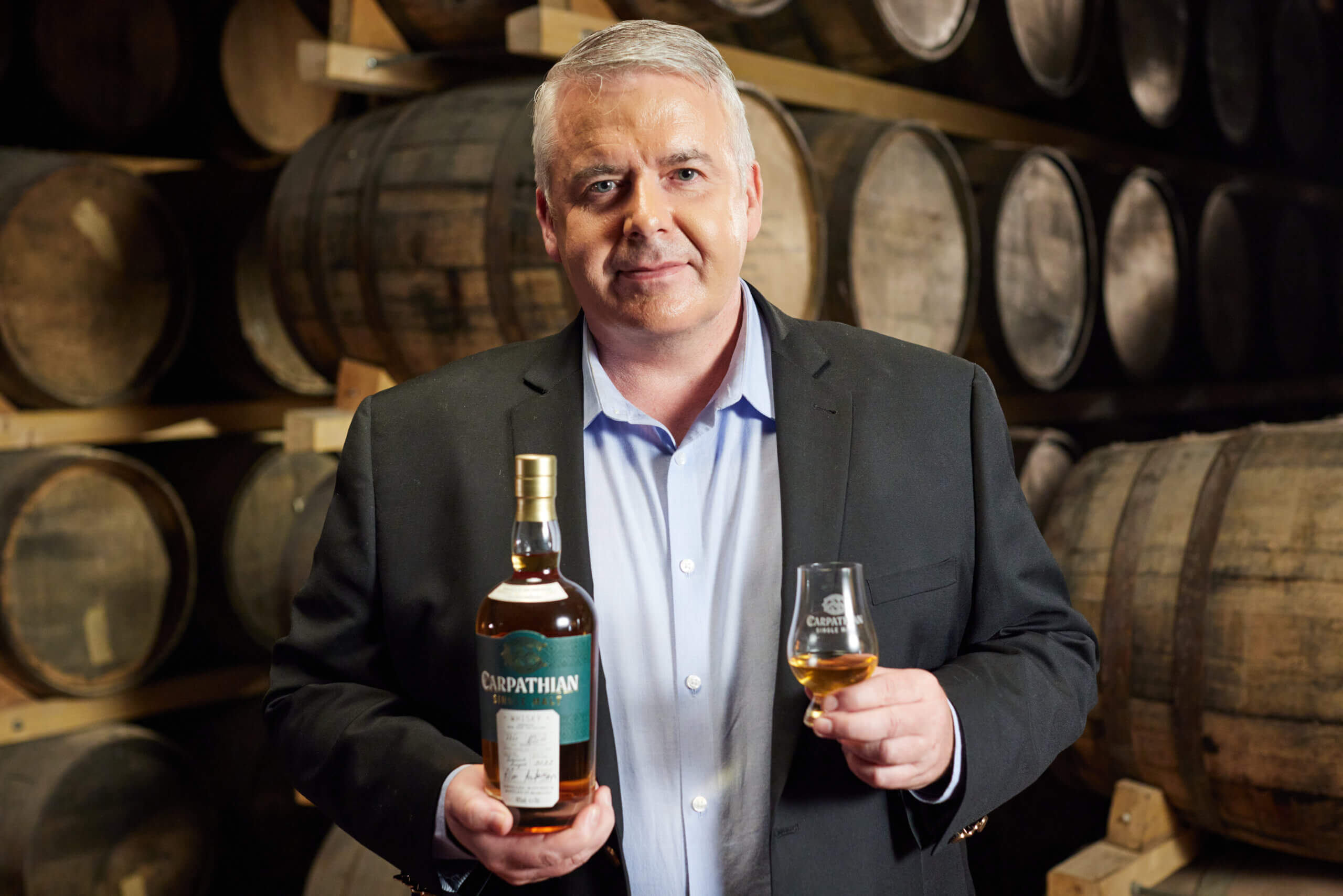
Mr. Allan Anderson
Dear WHISKY:
What kind of whisky did the Loch Lomond Distillery produce?
Allan:
It was designed to produce grain whisky using corn or wheat with a set of four pot stills.
Dear WHISKY:
How long did you work there for?
Allan:
I worked there for over 20 years and became their chief distiller and engineering manager. While I was there, the production per year increased from about 8 million to 20 million litres.
Dear WHISKY:
How did you continue your career?
Allan:
I worked at the Invergordon Distillery for Whyte & Mackay Ltd, producing 40 million litres of grain whisky annually. That’s when it became apparent that I prefer living in the city rather than the countryside, so I moved back to Glasgow. I did some contract work, and then moved to Ireland for my next chapter of work.
Dear WHISKY:
What did you do in Ireland?
Allan:
I was introduced to Alex Mountcharles, who headed up the Slane Distillery, which is now famous for the Slain Festival, music concerts held at the grounds of Slain Castle every year. We put a project together to build a distillery on the castle grounds.
Dear WHISKY:
How did you build a new distillery?
Allan:
We first had to gather enough funds. People often don’t realize how much money is involved in building a distillery. We first struggled to find someone to invest in the project. However, in the end, the board of Brown-Forman offered us a deal.
Dear WHISKY:
What are the other experiences you had in Ireland?
Allan:
I was also introduced to Mr. John Teeling. He sold the Cooley Distillery and bought the Great Northern Brewery, which was an ex-Deagio site. I worked with him to convert that brewery into Ireland’s second-largest Distillery, the Great Northern Distillery. We made single-grain whisky, triple distilled malt, double distilled malt, peated whiskies and pot still whiskies for three years.

Carpathian Single Malt
Dear WHISKY:
How did you learn the skills and knowledge for distilling?
Allan:
When you’re in your 20s, you always someone elder and more experienced to guide and teach you. To be involved in the distillery process, you must know many disciplines, such as chemical and organic engineering. I learned those skills from the many great people I’ve worked with.
Dear WHISKY:
Who are those people?
Allan:
I worked with John Peterson, Master Blender of the Loch Lomond Distillery, James Pride from Whyte & Mackay Ltd, John Teeling and David Hynes of the Great Northern Distillery. They were in their 60s and the twilight of their careers, and I was fortunate to learn from them.
Dear WHISKY:
What is your philosophy of whisky-making?
Allan:
Making whisky that I like to drink. If I like it, other people will like it.
Dear WHISKY:
What is your favorite whisky?
Allan:
I like peated whisky. So, we have released a Cask Strength Peated 46%, non-chill-filtered version. The cask strength took a masters’ award, the Spirits Business Global Masters. We are proud of this new release.
Dear WHISKY:
Since when were you involved in the Carpathian single malt project?
Allan:
I was involved in it from the very beginning. Back in March 2017, I was introduced to Dr. Nawaf Salameh, the founding chairman of the Alexandrion Group, and became a consultant. I was in charge of equipment selection and modification. In September 2017, I was already in Romania working on the Carpathian Single Malt project, so it made me joined the company full-time in January 2018, and utilised their distillery which had already been there 20-years, to create Romania’s first ever single malt whisky.
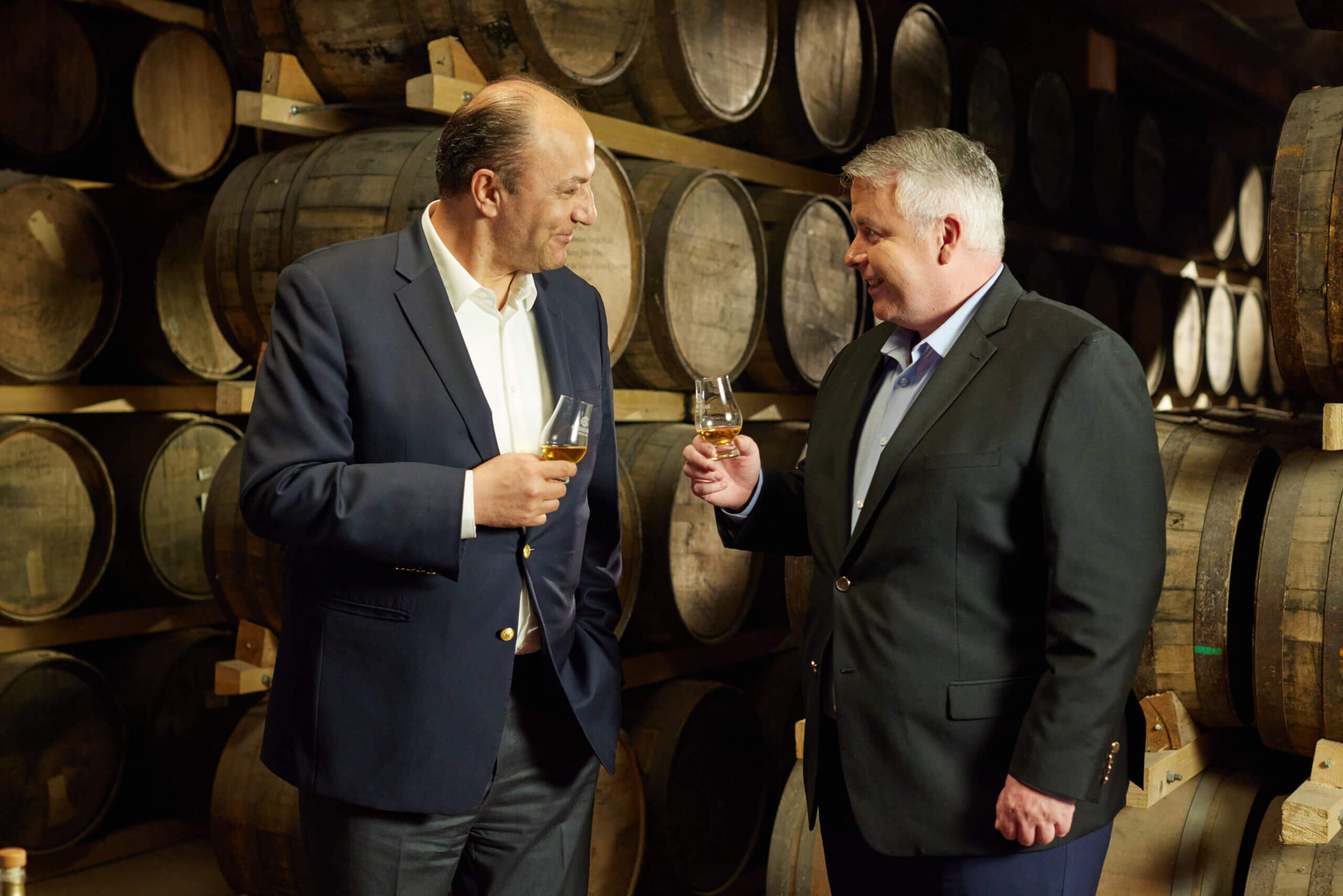
Mr. Anderson and Dr. Nawaf Salameh, a founder of Alexandrion Group
Dear WHISKY:
What was your first impression of Dr. Nawaf Salameh?
Allan:
He was charismatic and had an abundance of passion and energy to assist me to make the first single-malt whisky in Romania. He was not the kind of entrepreneur and businessman just looking for a return-investment, but had his heart and soul in this project and all the others he overseas. I could feel his great passion for making Romania’s first ever single malt whisky.
Dear WHISKY:
How did you feel when you first heard about making whisky in Romania?
Allan:
I was not surprised to be honest. There are single malt whisky producers on every continent these days, so there is a whole world outside Scotland, who want to make whisky. I actually had a job offer from Cambodia around that time as I was looking to move to Romania. However, when I came to Romania for a week, I quite liked the environment. Also, the project seemed unique and attractive to me since it was to develop the first single malt whisky distillery in the country.
Dear WHISKY:
What was your first impression of the whisky culture in Romania?
Allan:
When I went to the shops about five years ago, I saw Jameson Irish Whiskey and Ballentine’s whisky but not many other varieties. Cognac and wine were more popular in Romanian drinking culture.
Dear WHISKY:
Why did you discover the business potential of whisky in Romania?
Allan:
Things seemed to be developing, and the range of whisky at the stores was getting large at that time. Also, I saw whisky festivals attracting a younger audience. Thus, from those experiences, I felt a growing interest in whisky among Romanians.
Dear WHISKY:
What kind of whisky is Carpathian Single Malt Whisky Distillery aiming to create?
Allan:
We are trying to bridge the gap between whisky and the traditional spirits in Romania by using the red wine casks, and the cognac casks that Romanians often drink. The strategy is exemplified by the fact that the cask we use the most for finishes is Fetească Neagră. This is a well-known grape or wine variety here in Romania.
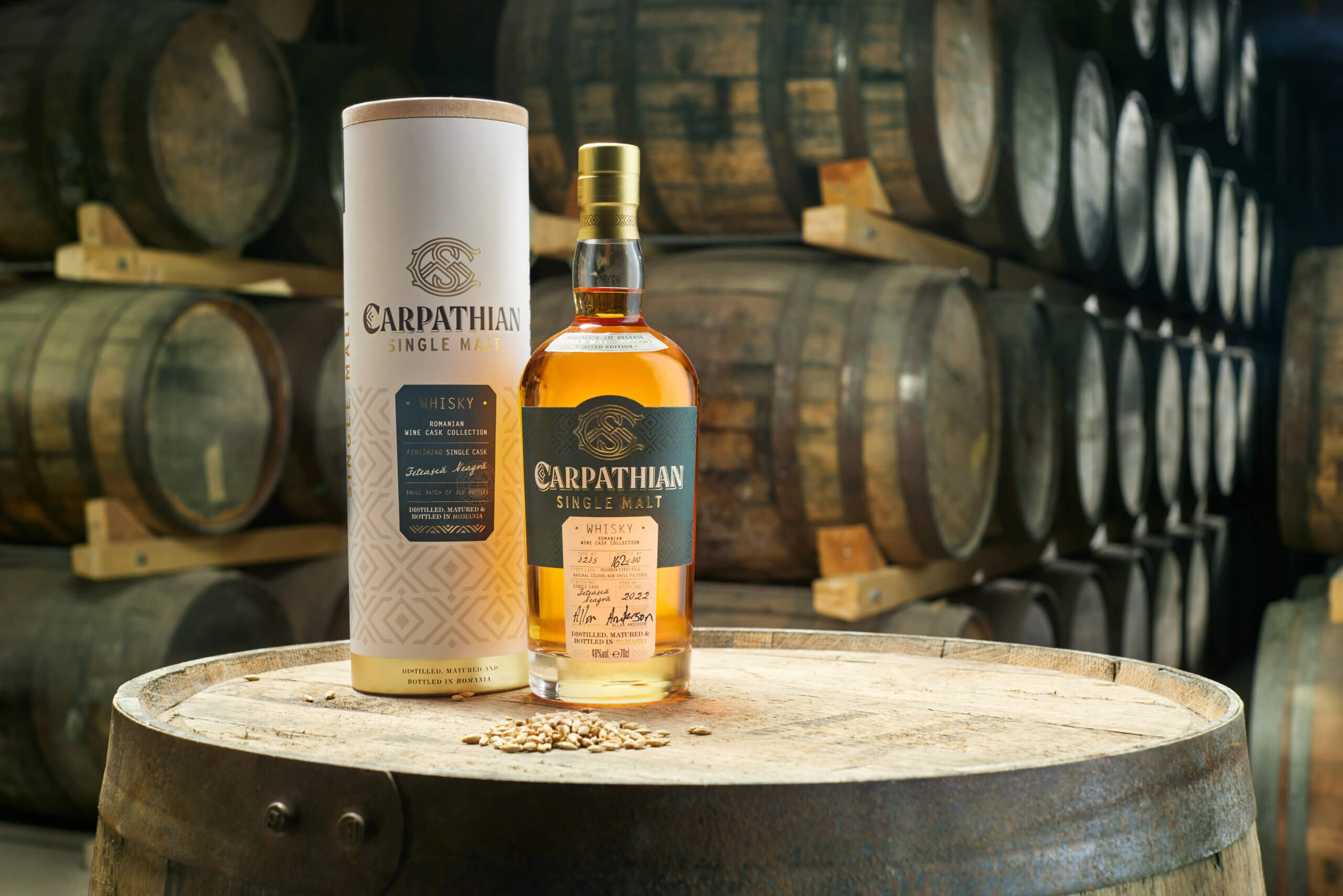
CARPATHIAN Feteasca Neagra
Dear WHISKY:
Can you elaborate on the process of maturing?
Allan:
We generally select three- to five-year-old bourbon barrels and mature whisky in them for one year. Next, for the finishing process, we pour it into Romanian wine casks, such as Fetească Neagră casks, made in our own winery.
Dear WHISKY:
How many kinds of whisky do you create?
Allan:
We’ve made about 40 different whiskies. These are under the influence of cask, yeast, and cask strength.
Dear WHISKY:
Why do you make so many different kinds of whisky?
Allan:
This is because Dr. Nawaf Salameh wanted to experiment with as many different finishes as possible.
Dear WHISKY:
Have you encountered any surprises from the cask that you experimented with?
Allan:
One real surprise was with the Greek wine cask, Vradiano. I took a sample of whisky from the cask after two to three months; it turned out to be very thick and viscous, with a dark and black colour. However, that particular whisky ended up taking a Master’s award, so that was a good surprise.
Dear WHISKY:
What are the criteria for choosing casks?
Allan:
I try to find wines with a high sugar content to have a good impact on the whisky’s sweetness. Additionally, they should be freshly emptied to prevent the growth of bacteria in the cask, which could happen rapidly due to the wine’s low alcohol content. Also, we need to find a winemaker who has not used any sulphur compounds, such as sulphur candles, since that can affect the whisky quite badly.
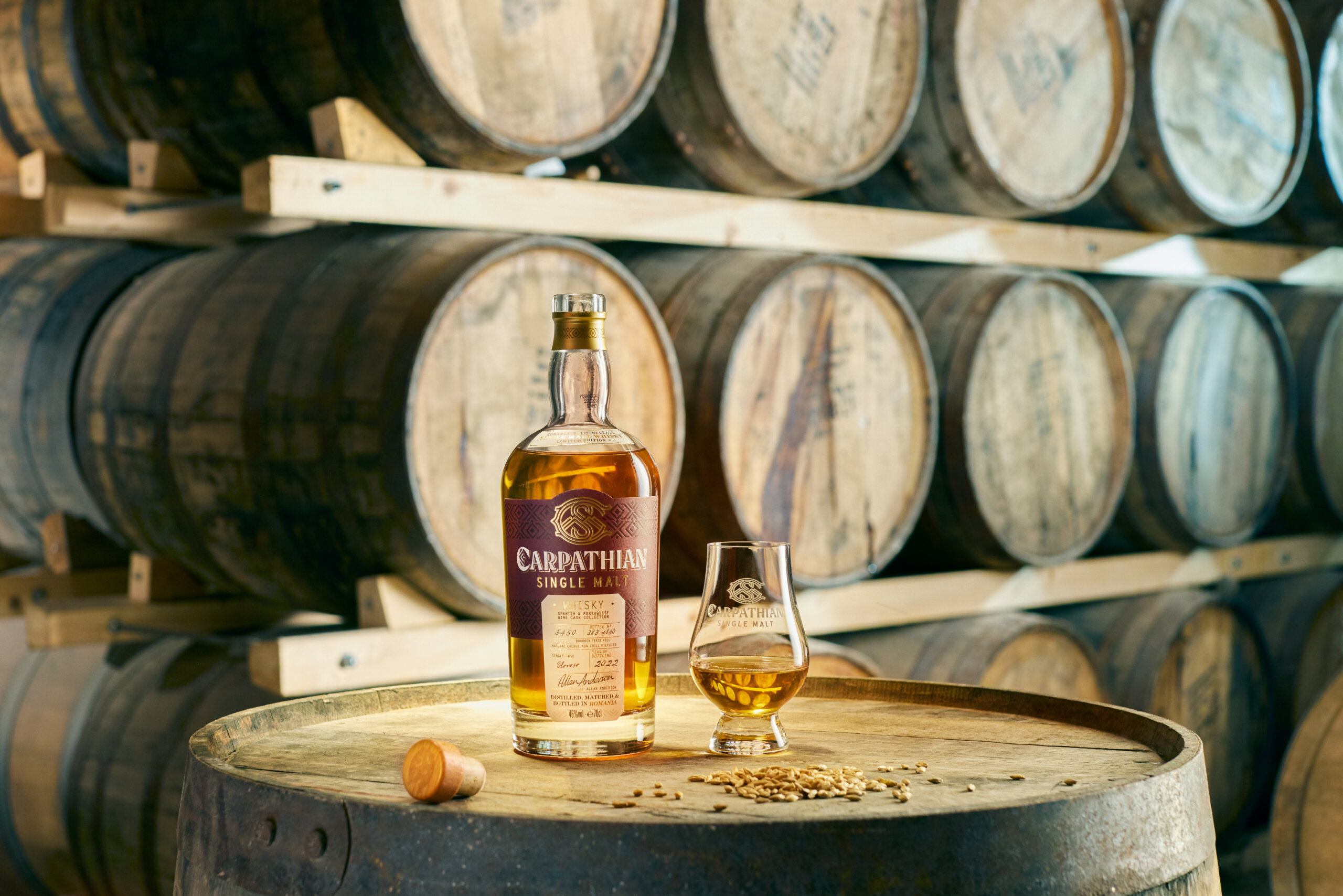
Spanish and Portuguese Wine Cask Collection
Dear WHISKY:
How do you gather casks from all over the world?
Allan:
Every month, a group of French agents who find casks around the world makes offers on our behalf. Also, we have our own winery to source casks and close relationships with some others. We prefer taking casks directly from there.
Dear WHISKY:
How does each different casks influence the whisky?
Allan:
You get the notes of vanilla and caramel from the bourbon casks which soften the whisky taste. In contrast to the European Oak casks, which have had wine, you get some spices and fruits in notes that make whisky fruity and easy to drink.
Dear WHISKY:
What makes Carpathian Single Malt Whisky distinct from other whisky brands?
Allan:
I think the climate and ingredients make the difference. As for climates, the summer is longer and hotter compared to Scotland and Ireland, so we can have a slightly faster maturation. We also have rich water from the Carpathian mountains directly from a deep well that we own. Also, we use barley from Romania, taken at a farm that is only 50 km away from the distillery.
Dear WHISKY:
What are the characteristics of the barley from Romania?
Allan:
It’s lower yielding than the Scottish counterpart because it’s been designed for brewing. However, it makes the water very sugary and malty, producing sweet and thick whisky. I believe that the oily texture of whisky comes from the barley.
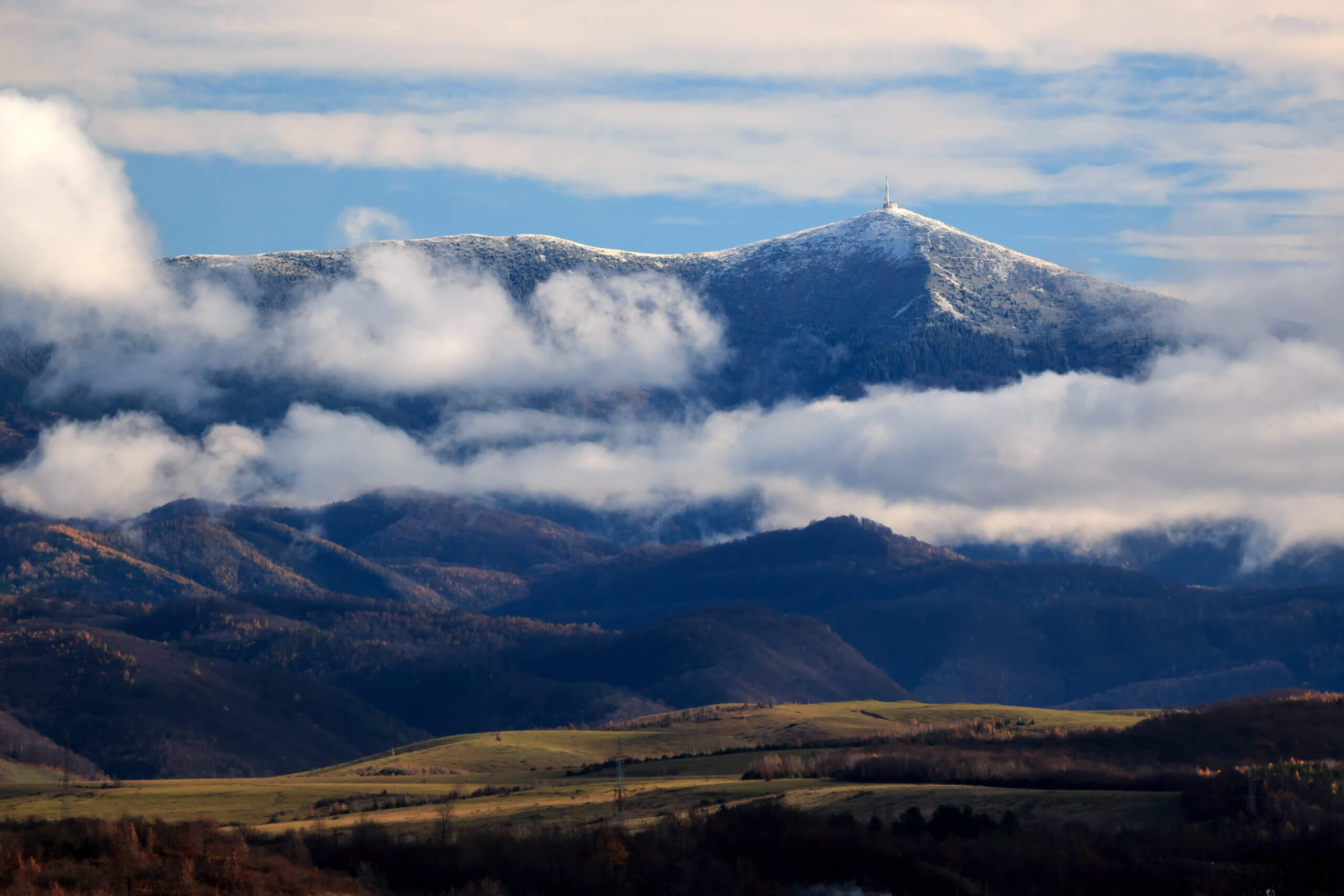
Carpathian Mountains
Dear WHISKY:
How are machines, processes, and buildings different from other distilleries you have worked on?
Allan:
From those aspects you mentioned, actually noting is different. We source equipment mainly from Italy, but a mash tun, an 8,000-litre wash still, and a 6,000-litre pot still which we use are the same as any distillery.
Dear WHISKY:
How many people are working at the distillery?
Allan:
About 200 people are working on site. However, it is one big factory with distillation and bottling sites. The distillery is quite small, so only ten people work there with 3 shifts. The other 190 people are on the bottling site.
Dear WHISKY:
What is the capacity of the bottling site?
Allan:
Our bottling facility produces 40 million bottles a year, including vodka, brandy, gin, fruit liquor and whisky.
Dear WHISKY:
What are your distillery team members like?
Allan:
They’re all local people and working with us for about five years. We also have a full laboratory here, enabling us to teach them the skills and knowledge required for the lab in production of all our spirits. We have sent an assistant manager to Scotland for a week of training too.
Dear WHISKY:
How do you employ them?
Allan:
We take some people from the bottling lines if they show an interest in distilling. We also take people directly from the university to nurture, develop and train them.
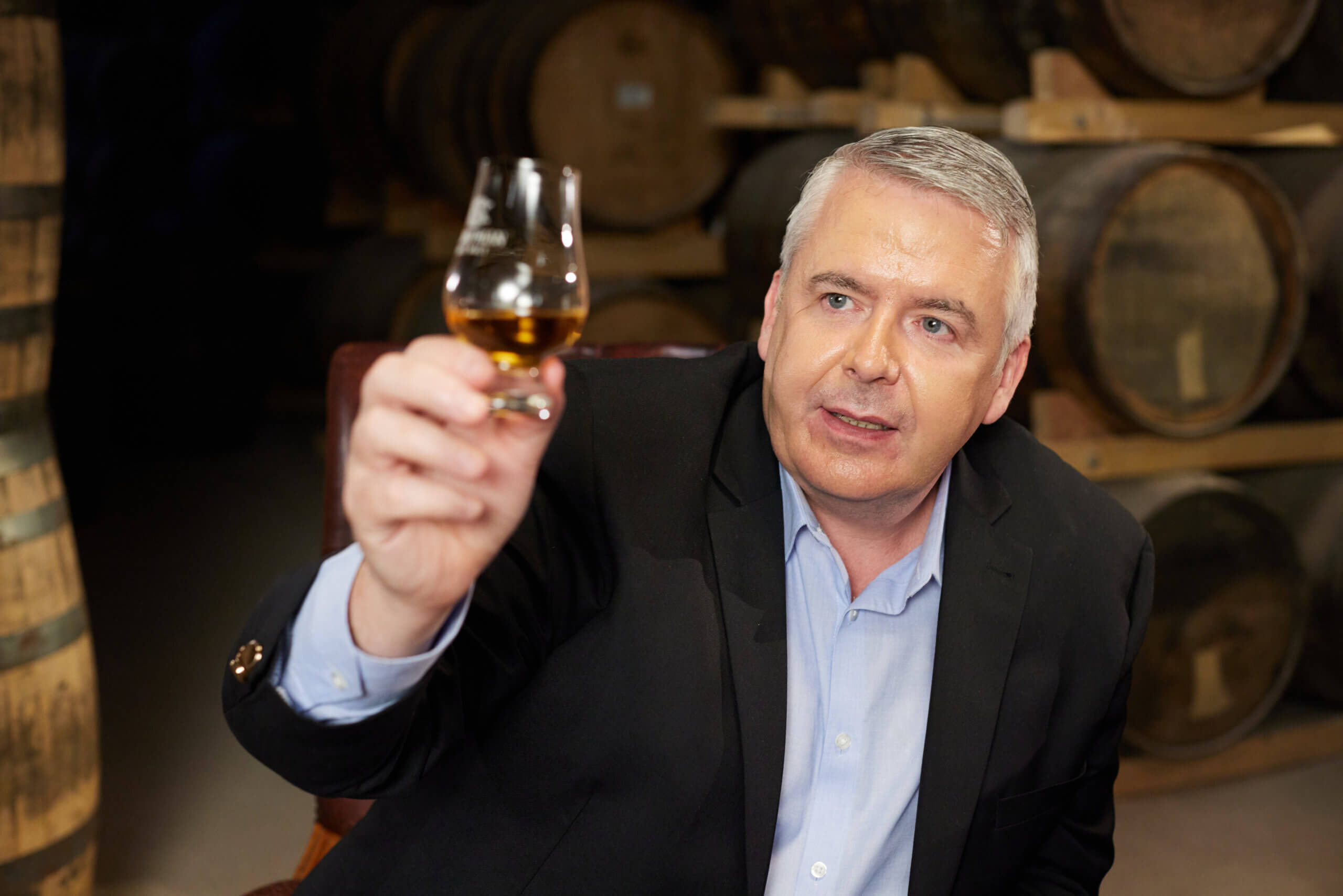
Mr. Allan Anderson
Dear WHISKY:
What are the features of whisky-making in Scotland?
Allan:
In Scotland, whisky-making is so traditional that everything is done the way it was done 300 years ago. The change is restricted by the Scotch whisky regulations. The positive side is that it has kept Scotch whisky’s quality consistent over history. However, I think they could do better in terms of innovation.
Dear WHISKY:
What is the specific issue that you found in whisky-making in Scotland?
Allan:
There are a lot of opportunities missed in Scotland based on these regulations. The regulation classifies whisky from rye, malted barley, and other grains as grain whisky. Therefore, if you have rye whisky in-keeping with the US standard, it cannot be called rye but a single-grain whisky in Scotland.
Dear WHISKY:
What are the characteristics of whisky-making in Ireland?
Allan:
In Ireland, enzymes can be used to increase the efficiency and yields. Also, the common way to distill is triple distillation, in which they use three columns: an analyzer, a rectifier, and an AD column. This makes the taste of whisky lighter and sweeter. In Scotland, on the other hand, there are just two columns: an analyzer and a rectifier. That makes quite a heavy-grain whisky.
Dear WHISKY:
How about the process of making a malt whisky?
Allan:
In making a malt whisky, I don’t see much difference between them. The difference is just a pot still where you can use the mixed mash, allowing unmalted barley to be the ingredients. For example, we took up to 70% unmalted barley and 30% malted barley at the Great Northern Distillery. This makes a spicy pot still whisky.
Dear WHISKY:
Why did you choose the Scottish way in Carpathian Single Malt Whisky Distillery?
Allan:
It was what Dr. Nawaf Sawame wanted to do. He became Keepers of the Quaich in 2016 and wants to honour the best and most traditional way of making single malt whisky, with the added advantage of allowing for innovation. He’s passionate about single malt whisky, so choosing the double-distilled single malt whisky was the best way. He wanted to make a kind of highland single-malt whisky. I also prefer double distillation as it can make the taste of whisky slightly more complex and heavier. That’s why we distil in the Scottish way.
Dear WHISKY:
What do you feel most proud about working at the first single malt whisky distillery in Romania?
Allan:
I am proud of creating a product from a destination where nothing has existed before. For several years, it took time to find the ideal path, and of course, came up against the usual challenges, but this turned into a wonderful process that gradually became easier. To this end, last year and the beginning of this year, we have been picking up global awards for Carpathian Single Malt Whisky, which shows that we are definitely on the right path. This makes me feel that Romanians have started to take some whisky.
Dear WHISKY:
Have you encountered any challenges as a Master Distiller in Romania?
Allan:
Everything was a challenge. To start the new distillery, we had first to move everything to another country. We needed to bring all the knowledge, experience, and materials to another part of the world. After these parts of the process were complete, another challenge was training and retaining people. Those were difficult processes, but we ultimately managed them.
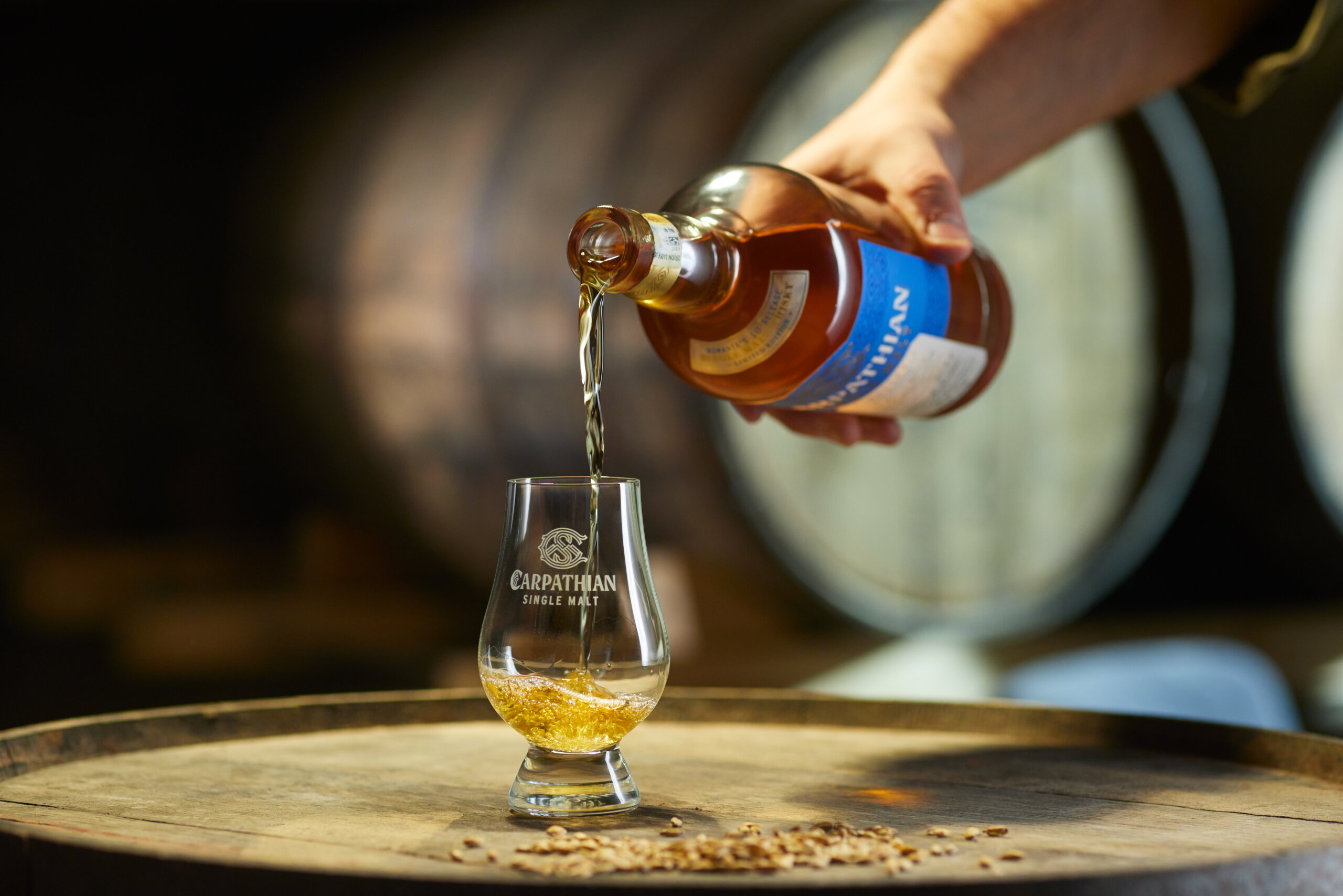
CARPATHIAN Commandaria, Greek & Cypriot Wine Collection
Dear WHISKY:
Have you seen any cultural differences between people working here?
Allan:
When I first came, I noticed the difference in working ethics, based on cultural and societal differences. If you tell somebody to do something, they won’t deviate from that; they are laser-focused on that specific task. I’ve found that very strange because in Scotland and Ireland, people deviate all over the place. Therefore, you have to be very careful about how to give work instructions because, in whisky-making, it’s not always a straight line. Sometimes, you do need to deviate to get the process going.
Dear WHISKY:
Is the language barrier a big challenge for you?
Allan:
The language has been challenging but not really a big issue since many people here speak English, and I can use Google Translate. Also, from my looks, people can tell that I am a foreigner, so they speak to me in English anyway.
Dear WHISKY:
Could you tell us about the most memorable moment in your career?
Allan:
At the Great Northern Distillery in Ireland, I was responsible for installing new equipment to open the distillery. I clearly remember the moment when we produced the first grains spirit, and all our efforts have paid off.
Dear WHISKY:
When do you feel the most proud about your work as a whisky distiller?
Allan:
I feel proud when I see a bottle on a shelf with my name and my signature on it, which adds authenticity to the product, a kind of route map to its origins. Carpathian Single Malt Whisky bottles were the first bottles that have my name on them. Even though I have produced about 20 million litres of alcohol in Ireland, the culture there was slightly different, it was people like bottlers who put their names on the product.

Carpathian Single Malt
Dear WHISKY:
Do you have a specific cask that you’re interested in?
Allan:
I am interested in Japanese Mizunara casks, but they are expensive and difficult to get. We were told that one single cask cost 3,000 euros. It is very costly compared to a bourbon Cask from Kentucky, which is 185 dollars, whilst a wine cask is from 80 to 200 euros.
Dear WHISKY:
How do Japanese casks differ from Europeans?
Allan:
I haven’t actually tasted many Japanese spirits, but it is my quest and the brand strategy is to get as many finishes of Carpathian Single Malt Whisky as possible. So, I’m looking for casks from Brazil to Japan. Also, since we want to open up some distribution networks in Japan, it will be nice to try some casks from Japan.
Dear WHISKY:
How do you want to develop the Carpathian Single Malt Whisky?
Allan:
I want to finish the Fetească Neagră yeast project first. We found that the Fetească Neagră grape has wild yeasts, so we isolated some of them. We are trying to cultivate purely Romanian yeast from them and use it in our whisky production. Moreover, we are aiming to use Romanian peat. Currently, we are getting the Scottish-peated malted barley from a Belgian company. We have already found a peat in Romania, but I need to find a place to take it and smoke it for me.
Dear WHISKY:
What is the long-term objective for the Carpathian Single Malt Whisky?
Allan:
We want to have all the processes of whisky-making within our site, so we have projects to build a malting plant with its own peating kiln and new warehouses. That would be a long-term step, but we need to keep those current projects going at this moment.
Dear WHISKY:
How do you think the popularity of whisky in Romania will grow in the future?
Allan:
I think the popularity will increase in the future. In Romania, people spend more money on traveling and luxury brands. This trend will hopefully lead people to try whiskies as well.
Dear WHISKY:
What is your personal next goal?
Allan:
I turned 55 a couple of weeks ago and have been involved in whisky-making for nearly 31 years. I think the older you get, the better you get at whisky-making. I don’t know how long I will continue this way, but I think I will just keep on getting more experience, making good whisky, and endeavoring for more awards.
Dear WHISKY:
Are you going to be involved with more of the international projects?
Allan:
I’ve been involved with the distillery project of Alexandrion Group in New York since 2018. I will probably engage in a distillery project in Japan. However, we are currently planning to double the distillery production in Romania. So, I am heavily involved in the project in Romania for now.
Dear WHISKY:
Could you give our readers a message?
Allan:
The world of whisky is big. There’s more than the Scotch and American whisky. So I recommend trying some new-world whiskies. If you try some of the European whiskies, I think you’ll be delighted with the results!
This article revealed Allan Anderson’s endeavours in Romania, where no single malt brand existed before. He overcame numerous challenges in transferring skills, knowledge and abilities to go on and create the multi-award-winning Carpathian Single Malt.
It also highlighted his analysis of whisky based on his experiences in multiple distilleries both in Scotland and Ireland. He is now passing on his knowledge to people working within the sector in Romania to grow the brand further on the world stage.
Carpathian Single Malt Whisky will continue to increase its worldwide recognition with Allan as a Master Distiller and his quest to experiment with various casks. If you taste whisky from Romania, you will not only enjoy the rich flavours from unique cask ranges, but also feel the passion of the people who gave birth to it.